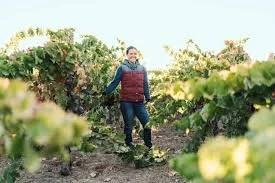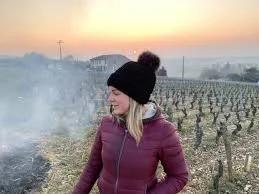To Till Or Not to Till
Nikita Malhotra
October 31st, 2025
Recently I was part of a conversation with young sommeliers, we were talking about Oregon, and many had fresh experiences from winery visits and working harvests. We were in dialogue about farming techniques; and then I overheard someone exclaim that “Tilling is evil!” She did it in a way that the whole room went silent, many nodded in agreement to this puritanical statement, whereas I looked both amused and concerned. I have never been dogmatic in my opinions on farming or viticultural practices, as these choices stem from ideas steeped either in history and culture or on very personal relationships with the land and with the vision of farming. No one makes wine in the same way.
But from this conversation I saw an interesting schism in a dialogue that was once just described as conventional farming vs. natural or organic farming. Now we talk more about regenerative agriculture, which has been a movement that evolves from organic and biodynamic farming. The key message of regenerative agriculture is that if you leave a soil covered with a permanent mat of vegetation it will become an important store of carbon through the build-up of organic matter. In California and Oregon, young farmers are very concerned with tilling, as it poses a threat to soil health, something that is essential to regenerative farming.
Tilling is still very important in classic regions such as Burgundy, and it is more interesting when we consider soil erosion being an issue there as well. Some producers will point at the different soil types being at the center of understanding tilling, with clay there shouldn’t be as much of a worry. But that would still be at odds with regenerative farming.
I started posing this question to winemakers, and here are some of the responses I got. It will continue to be an topic I will investigate, but thought that these different answers might encourage us all to think about this topic. I might not be the girl that screams that tilling is evil, but maybe I can inspire your next question to a winemaker.
William Kelley
“That’s a very open-ended question on a subject that is very complex and situation-dependent. In Burgundy, with our soils and planting densities, I would go so far as to say that it is in most instances essential. But the nature of the tilling itself, especially as regards depth and timing, is hugely important for its positives and negatives.”
Martha Stoumen
Ooo, this is my favorite type of question. And CA is so different than Burgundy (rain patterns, weather, soil all completely different)
Since I dry farm the vineyard I lease and farm, I was always taught by the old timers in the Ukiah area that you need to till/cultivate the soil to create a dirt mulch to wick water up higher in the profile during the late summer (the hottest & driest time of year).
While the old timer’s vineyards look VERY healthy—especially for 75+ year old vines—I was worried about breaking up mycorrhiza in the soil (esp AMF that are adapted to survive dry CA summers—see brief article link about AMF and grapevines). We stopped tilling two years ago and moved towards using a roller-crimper to create a straw mulch rather than a dust mulch. Currently—during the hot, dry summer—the vineyard floor is still very hard even with the dry grasses crimped (crimped so we don’t have bare exposed soils). We’re in transition period for the next few years. Long term (5 years or so) the soils should soften—more towards that springy “forest floor” feeling. Domaine Leon Barral, where I worked in the South of France (much more like CA weather-wise at least), was successful using a roller-crimper long term.
Long story short:
AMF are not the only consideration, but they are very important to grapevines (similar to our own gut microbiome, for grapevines AMF increase resiliency against pests and disease, and increase mineral and water availability). So I’m a fan of anything that helps/doesn’t impede this relationship, including no till. And I’m willing to have patience during this transition period in my own vineyard.
Of course, every vineyard (like every body) is different, so practices need to be fine tuned to each unique site.
Camille Thiriet
Yes we are tilling, both with the tractor and with horses. Ideally we would use the horse everywhere as it is much less compaction on the soil and no diesel obviously! But it is too cost prohibitive to do all of the vineyards like Bourgogne with this method, otherwise we would have to raise the price. Also it is difficult to do 5 hectares with a horse because the timing is so tight with the weather if it’s too dry they can’t go and same if it is too wet. So we use the tractor everywhere else. We try to go as little as possible one griffage to open the soil in spring and help the compost and fertilizer enter into the soil. A second griffage to put everything « a plat » and then one or two passages of intercep to stop the weeds under the vines. In burgundy the weeds can be pretty invasive « ronce, chardons, liseron, etc » dans une année sec ça peut tirer beaucoup sur la vigne, baisse de rendement, feuille qui sèche etc) in wet years a cover crop can be beneficial but still needs to be taken care of and cut or removed at some point in the year. So lots of options to consider and nothing is the perfect solution you have to adapt to the soil the site the year and the financial considerations. Hope this helps! Matt ( Camille Thiriet)




